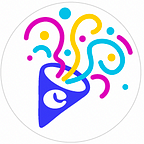Okay, you’ve decided to dive into NFT space, but some words are confusing: raffle, mint, reveal, whitelist, pre-mint. Let’s figure it out!
Let’s go — NFT vocabulary:
When looking for a project to participate you often come across the abbreviation DYOR (do your own research).
DYOR — means you should do your own research of the project and make your own decision about purchasing.
How to choose NFT projects and what criteria it is important to monitor check in this post.
One way to get NFTs at initial price / minting price — through Raffles.
Raffle is another name for a giveaway. By participating in Raffles you can win a WL or whitelist or allowlist to buy an NFT. As a rule, to participate in Raffle you need to register on the site, hold minimum balance on your wallet and subscribe to the project in social networks. Conditions are individual in each project.
Whitelist (WL) — the guaranteed participation in the purchase of NFTs at initial price on minting date, before listing on NFT marketplaces. If the project is promising, the Whitelist allows you to be among the first to buy at initial cost. Whitelist is often distributes to users by their roles in discord.
Mint — buying NFTs from smart-contract at initial price. By minting an NFT you are its first owner. Simply Minting is the process of transferring NFTs from the creators contract to the owner’s wallet. Mint can be free or by initial price set by creators.
Pre-mint (early access) often has lower price.
Public Mint — Open Mint for everyone to participate. Often accompanied by Gas Wars.
“Gas War” — because there are so many people who want to buy, but NFT supply is limited, users deliberately raise the transaction fee , thereby increasing the chances of a mint.
Okay, you got WL for activity in the project, minted NFT and decide to sell it on the marketplace. But all NFTs look the same, why? They just haven’t been unrevealed yet. Reveal?
Reveal is the discovery of NFTs. Most collections contain different NFTs: regular, rare, super rare. Which one you get is a lottery; you’ll find out which one you get after Reveal. The more NFTs you buy, the higher the chance of getting a rare or super rare NFT.
Reveal can be in 2 days or in 2 months. It’s different for every project. Unreaveal NFTs usually cost more, because they include a chance to get rare. After reveal some collectors dissapointed and try to sell common NFTs at floor or lower price.
Rarity — Rarity is calculated from the total number how many similar NFTs are in the collection. Rare NFTs usually more expensive and more enjoyable to have in a collection.
When your NFT is revealed, you can check it Traits. If you really like your NFT and the PFP project, you can put the NFT on your Twitter avatar.
Traits is a characteristic element of NFT. Traits can be anything — an item of clothing, different color, an accessory of the NFT character.
PFP — Picture for Profile. Simply put, it’s an avatar. Some analytics services track the number of owners who use NFT as PFP. Sometimes this is an important criterion of project success evaluation.
In addition to Raffle and Mint, you can buy NFTs revealed or unrevealed on the marketplace.
Floor price — the lowest NFT price on the secondary market.
Floor sweeping — repurchasing the lowest price NFT, to raise the price of the collection.
We’ve covered the most basic terms you might come across when you start learning about NFTs. Write other terms you find in the comments — we’ll be glad to help you!
